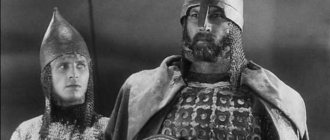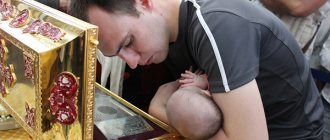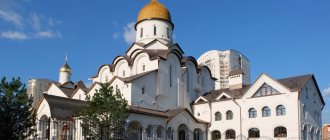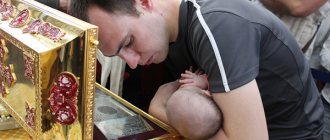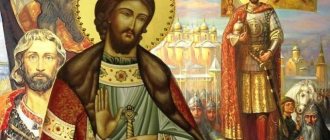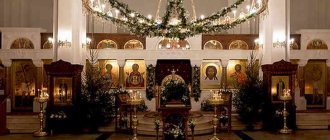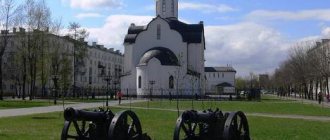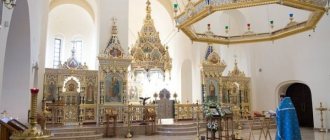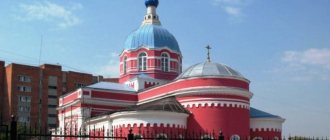The reliquary is a magnificent work of applied art, consisting of several parts and made in the Baroque style. The memorial complex of the remains of St. Alexander Nevsky was created during the reign of Elizaveta Petrovna; it was constructed of silver and weighs one and a half tons. Previously, the shrine of the great king was located in the Trinity Church, located on the territory of the Alexander Nevsky Lavra.
With the Bolsheviks coming to power, the memorial complex was moved to the Hermitage; since 2012, it has been in the process of restoration work. The relics safely returned to the Lavra Cathedral in 1989.
Brief Life
The young prince faced difficult times - Rus' was torn apart by internecine wars. Moreover, ill-wishers attacked from all sides. As a youth, Alexander took princely vows and received a blessing to defend his homeland. When he turned 16, his father left his young son to rule Novgorod on his own.
In 1239, Alexander married the daughter of the Prince of Polotsk, who received holy Baptism. The father blessed the young people with the miraculous image of the Mother of God - the Feodorovskaya icon was always near Nevsky until his death.
The Mongols were advancing on Rus' from the east, and the crusaders, incited by the Roman authorities, were advancing from the west. Everyone wanted to weaken the Russians and destroy them. But the Lord sent His warrior - Alexander, who was not yet 20 at the time. After prayer in the Church of Hagia Sophia, he led his squad against the enemy.
Work as a courier at Yandex.Eda (up to 3,400 rubles per shift) leave a request →
The Grand Duke accomplished many glorious deeds. The Lord placed great responsibility on his shoulders. He began to rule the Vladimir, Novgorod and Kyiv principalities.
- 1253 - repulse another attack on Pskov.
- 1254 - peace treaty with Norway.
- 1256 - campaign in Finland.
- 1256 - Khan Batu died, then his son Sartak, with whom the prince built a trusting relationship.
- 1262 - the last journey of Saint Alexander to the Horde.
Returning to his homeland, the prince became seriously ill. Anticipating his imminent death, he became a monk with the name Alexy. The righteous man departed to the Lord in the Feodorovsky Monastery. The relics of Alexander Nevsky were delivered to Vladimir. During the religious procession, the body remained incorrupt.
Years of the prince's life
The date of birth of Alexander Yaroslavovich Nevsky is considered to be May 30, 1220. He was the second son of the Pereyaslavl prince Yaroslav. When his father went to reign in Kyiv, Alexander was left in Novgorod, where his activities as a ruler began. He was 15 years old then.
In 1249, Alexander became Prince of Kyiv. At 32, he received a gold label and became the Grand Duke of Vladimir. This happened in 1252, after Prince Andrei Yaroslavovich, frightened by another invasion of Tatar troops, fled to Sweden.
The most significant event in the life of Alexander, according to contemporaries, was the victory over the Swedish army on the Neva River in 1240, which subsequently gave him the nickname Nevsky. The second important battle was the Battle of the Ice in 1242, during which the knights of the Livonian Order were defeated and drowned on the ice of Lake Peipsi.
In 1238, Batu invaded Rus', as a result of which many Russian principalities came under the rule of the Mongols, but they did not capture Novgorod. Thus, Alexander Yaroslavovich remained more or less independent, but was forced to constantly negotiate with the khan. During his reign, he repeatedly went to the Horde to negotiate various matters relating to Russian lands. He pursued a policy of pacification, giving the Russian lands the opportunity to rest from the invasions of the Mongol warriors.
During another trip, he fell ill and died on the road. This happened on November 14, 1263.
History of burial and discovery
The remains of the popularly beloved prince were buried in the Nativity Monastery of Vladimir. During the ceremony, the Metropolitan approached the coffin to place a letter in the hand of the deceased, but he himself extended his hand and took it. The miracles were just beginning.
In 1380, before the Battle of Kulikovo, the bell ringer of the Nativity Church told of a vision of the spirit of the prince, who blessed his descendant, D. Donskoy. Many people do not know when the relics of Alexander Nevsky were discovered; it happened after the end of the famous battle. By that time, the body had been underground for more than a hundred years. Metropolitan Cyprian conducted a solemn identification of the body and declared the prince blessed. A service was compiled and icons were painted.
Cause and place of death
The death of Alexander Nevsky occurred on the road from the Horde to Vladimir. During the long journey, he fell ill and died at the age of about 42 years. The exact place of his death is unknown today. Historians are divided in opinion, putting forward two assumptions regarding this:
- Volzhsky Gorodets is today the city of Gorodets in the Nizhny Novgorod region.
- Meshchersky Gorodets is today the city of Kasimov in the Ryazan region.
According to information from historical chronicles, Alexander felt unwell while still with the Tatars. Therefore, the possibility that he was poisoned cannot be ruled out.
History of the relics
The popular veneration of the saint as a protector and healer among the people only expanded. After the official canonization, the life of the righteous man was compiled. Although modern historians have different assessments of Alexander Nevsky’s contribution to the history of Russia, church veneration maintains respect for him as a saint.
It is significant that the order to transfer the remains to St. Petersburg was given by Peter the Great, who did not really like the church and everything connected with it. But the king wished that the memory of the valiant warrior be preserved among the people. Since then, Alexander has been depicted on icons as the patron of the Russian capital, in military armor. Perhaps that is why not everyone knows that he ended his life as a monk.
Become a courier of the Yandex.Food service right now (up to 3,400 rubles per shift) leave a request →
After the Great October Revolution, the Bolsheviks wanted to open the tomb with the relics of Alexander Nevsky. They were not embarrassed by the indignant protests of the clergy and believers. The new government confiscated the shrine, which was put on display in the museum of atheism for all to see.
Public opinion paid attention to the valiant history of the saint only a few years later, when it became necessary to awaken patriotic feelings among the people. The image of a fearless prince was perfectly suited for this.
- In 1942, the USSR celebrated the 700th anniversary of the Battle of the Ice, and a film was made about the valiant commander.
- In 1944, an exhibition was organized in memory of the prince; of course, there was no mention of what was sacred. The Soviet government only tried to raise the morale of the soldiers who fought against the fascist invaders. Nevertheless, the Russian Orthodox Church supported the initiative and helped raise funds for the fleet.
- The relics were handed over to believers in 1989. They were transferred to the Alexander Nevsky Lavra, where they remain to this day. The Ark, which has great artistic value, remains in the Hermitage.
Patriarch Alexy blessed believers to pray near the remains of the saint for the soldiers who fell while defending their homeland.
"Century Deception"
“Based on the materials from the autopsy of the prince’s crayfish, a criminal case was initiated in 1922. Its essence was as follows: the churchmen knew that the relics were not incorruptible, they were charred bones, but they still “deceived” the people. “A century-old deception” - this term appeared in the case, in which three envelopes were enclosed as material evidence - with a note from the 17th century, a thread holding it together, and an inventory act from 1917. But this criminal case had no consequences, since representatives of the clergy did not make any statements about the incorruptibility of the relics of Alexander Nevsky. Moreover, Metropolitan Veniamin, through the press, appealed to Zinoviev to refrain from opening the relics, since their decaying state, caused by fires, is already known.
As a result, the criminal case was left without defendants and fell apart. Metropolitan Veniamin was shot in the same year, 1922, for another reason - for “opposing the confiscation of church valuables.” The file on the relics was closed and transferred for storage to the archives of the provincial court, from where, as it recently turned out, it ended up in the Leningrad Regional State Archive in Vyborg. Accordingly, the 17th-century note, the location of which was considered unknown (there were only photocopies), is stored in the archive. To date, this is the only artifact that has lain with the remains of Alexander Nevsky for two and a half centuries and is available to researchers. The relics themselves returned to the Lavra only in 1989 from the Museum of the History of Religion and Atheism (housed in the Kazan Cathedral - Ed.), and it is unlikely that they will be available to experts in the near future, but the note and acts of 1922 can and should be studied .
It is important to note that the artifact became available for study thanks to the caring staff of the archive and its director Yulia Kripatova , who, while working with the case, realized the significance of the documents contained in it and decided to get specialist advice. So she contacted me, and now we are doing research together. Of course, the note as a document should be in the archive, and the relics as a shrine should belong to the church.”
Unique sarcophagus
The saint's shrine is a unique work of art, which the Bolsheviks considered it a good idea to appropriate for themselves. Since then, negotiations have been underway to transfer the unique shrine back to the Church. For now, the sarcophagus is kept in the Hermitage. The entire composition consists of several parts:
- Two arks - the small one was created in the Baroque style. It is covered with an icon where the saint appears in monastic vestments. The large shrine was made during the reign of Elizabeth by the best craftsmen. 1.5 tons of silver were spent on production. The decorations were remade because many of them were not the right size.
- Pyramid - consists of tiers that create the appearance of an asymmetrical building with no straight lines.
- Two candlesticks and pedestals complete the masters' design.
The unique structure was handed over for restoration, but so far the decision to transfer the shrine back to the Church has not been made.
The meaning of the holy image in history
After the death of Alexander Nevsky, he began to be revered as a saint, although the official canonization of his appearance occurred only in 1547. This happened not because of the military achievements of the prince, but because for Orthodox Christians he became famous for his sincere deep faith and virtues.
In particular, thanks to his efforts, the Christian faith spread to the lands of the northern Pomors and the first Orthodox diocese was created in the Golden Horde.
Alexander Nevsky Lavra in St. Petersburg - how to get there
In 1710, Emperor Peter the Great personally inspected the site for the construction of a new monastery. He wanted to perpetuate the memory of the prince’s military exploits. It was believed that it was at this place that he defeated the Swedes. The monastery includes an entire architectural ensemble, which was an additional outpost of the capital. The growing complex was gradually overgrown with settlements, gardens and vegetable gardens.
About the author About the book
In 1723, the tsar visited the new holy place and ordered the relics of St. to be transferred. Alexander Nevsky to a new address, where they rest to this day: the river embankment. Monastyrki, 1, St. Petersburg, 191167.
Construction lasted for many years and continued under different rulers until the revolution. According to the audit, the capital of the Lavra in the spring of 1917 was about 2 million rubles. The number of brethren was more than a hundred people. In 1933, the monastery was officially closed. Its buildings housed medical, educational institutions, workshops, vegetable storage and dormitories.
The revival of church life began in 1996 under the leadership of Bishop Nazarius. Today, divine services are held again in the monastery, an icon-painting workshop has been opened, and other traditional crafts are being revived.
Where did Alexander Nevsky die?
History buffs will always be attracted by the noble image of Prince Alexander Yaroslavich Nevsky (1220–1263). Our city has the honor of being associated with the name of this great Russian commander and patriot. Here, in Gorodets, he spent the last days of his life.
The exact place of the prince’s death is still controversial among historians and local historians. It has long been accepted that Alexander Nevsky died in the cell of the Fedorovsky Monastery. Indeed, it is known that Alexander Yaroslavich died in Gorodets, having taken monastic tonsure and a new name - Alexey - before his death. But no monastery is indicated in the chronicles. There is no mention of the Gorodets monastery in the Life of the Holy Blessed Prince Alexander Nevsky, written shortly after his death.
In November 1263, returning from the Horde to Rus', the prince fell ill in Nizhny Novgorod and here, in Gorodets, he ended his earthly journey. Here is how the Moscow chronicle of the end of the 15th century tells about this: “In the summer of 6771... Great Prince Alexander went to the Horde to Tsar Berkai, and the tsar restrained him and did not let him into Rus', and spent the winter in the Horde, and there he fell ill, and went to Nizhny Novgorod and having stayed there for a short time and went to Gorodets and there fell into a great illness and took monastic vows in November 14, the same night and reposed; His holy body was carried to Volodymer.”
The Life of the Holy, Blessed Prince reports the same thing: “The Grand Duke Alexander Yaroslavich went from the foreigners to the New Town to Nizhny Gorod and spent those days in little health, reaching Gorodets and getting sick. ... The Grand Duke Alexander Yaroslavich, strongly jealous of his Lord God, leaving the earthly kingdom and desiring the heavenly kingdom, adopted the Angilian image of Mnishe’s life; May God also vouchsafe him the greater rite of commemoration - skim. Thus he will betray the Lord’s spirit in peace, dying in the month of November on the 14th day.”
There were attempts to consider the place of death of Alexander Nevsky not Gorodets on the Volga, but Gorodets-Meshchersky in the Ryazan principality (now the city of Kasimov). The inconsistency of this version was shown by P.I. Melnikov-Pechersky.
It is much more difficult to determine when and why the legend arose that Alexander Yaroslavich Nevsky died in the Fedorov monastery. As we have seen, the exact place of the prince’s death is not named either in the chronicle message or in the Life. Moreover, the Life is an independent historical source and developed independently of the chronicle news. “It is important that the details of the Life are based on the stories of eyewitnesses and witnesses,” writes historian A.N. Kirpichnikov, “who knew and observed Alexander Nevsky as a commander.”
The Life was written in 1282–1283. in Vladimir, in the Nativity Monastery - where Alexander Nevsky was buried. Its author was an unknown monk, a younger contemporary of Prince Alexander. As can be seen from the text of the Life, before his death the prince took monastic vows, but where exactly this event took place is not indicated. Either the author of the Life did not know or did not remember the name of the Gorodets monastery, or the prince’s tonsure took place in some other place. In any case, it is impossible to connect the death of Alexander Nevsky specifically with the Fedorov monastery, since no data on the existence of this monastery in the 12th–13th centuries has been preserved.
Historians I.A. Kiryanov and N.F. Filatov believes that the first documentary evidence of the Fedorov Monastery dates back to the beginning of the 15th century and is contained in the spiritual letter of the new owner of Gorodets, Serpukhov Prince Vladimir Andreevich Brave (hero of the Battle of Kulikovo and cousin of Dmitry Donskoy). In his will, the prince writes: “And my children know the Salt on Gorodets from one, and divide themselves into halves (in half - note by I. Kiryanov) delineate the Fedorovsky Varnitsa, and no one else enters the Gorodets Varnitsa.” Obviously, here “Salt on Gorodets” means salt mining sites in the vicinity of Balakhna. Salt mining brought great profits and could well be one of the privileges of the Gorodets monastery. Hence, part of the boilers that evaporated salt from the brine solution was named “Fedorovsky” in the charter.
It is not yet possible to support this version with new facts. But even if the will of Prince Vladimir really refers to the Fedorovsky Monastery (remember that this is a charter from the beginning of the 15th century), it cannot be argued that it was in it that Alexander Nevsky died in 1263. Thus, it is known from the chronicles that in the 14th century there was a monastery of St. Lazarus in Gorodets. “At the same time, there are no chronicle references to the Fedorovsky Monastery,” notes N.N. Bakhareva. — The legend about the death of Alexander Nevsky in the Fedorov monastery is not confirmed by his “Life”, compiled in the 80s of the 13th century. Mention in the spiritual charter of 1401–1402 of Prince Vladimir Andreevich Serpukhovsky of the Fedorov Varnitsa in Solin-on-Gorodets (Balakhna), which I.A. Kiryanov and N.F. Filatov is considered documentary evidence of the existence of the Fedorov Monastery in Gorodets; strictly speaking, it can hardly be considered such.”
The first mention of the Fedorovsky Monastery by N.N. Bakhareva discovered in the Gorodets Scribe Book, compiled between 1680–1684: “The Feodorovsky Monastery ..., in the field from the rampart there are old cemeteries, and in that cemetery there is a pillar, and in that pillar the image of the Most Holy Theotokos of Feodorovsky.”
The monastery was named after the miraculous icon of the Theodore Mother of God. This ancient icon is kept in Kostroma. There was also a legend there that the icon ended up in their city after the Tatar-Mongol invasion, miraculously escaping from Gorodets, devastated by Khan Batu. In Kostroma, the icon was named “Theodorovskaya” - in honor of the Church of St. Theodore Stratelates, in which it was placed. According to legend, the townspeople recognized their icon in Kostroma and the copy taken from it was transported to Gorodets to the Feodorovsky Monastery, renamed in its honor.
The early history of the Gorodets monastery still remains virtually unknown. But the Kostroma icon, which came out of Gorodets, gained great fame and veneration over time. It became a shrine to the reigning house of the Romanovs. This happened after 1613, when the first tsar from this dynasty, Mikhail Fedorovich Romanov, was blessed with it. Therefore N.N. Bakhareva even expressed the point of view that “one cannot exclude the possibility of the popular rumor assigning the name Fedorovsky to the long-defunct monastery already in the 17th century, in connection with the glorification of the icon of “Our Lady of Feodorovskaya” as a patronal shrine of the Romanov dynasty. The monastery could have received a legendary name thanks to the preserved memory that a popularly revered icon once came out of it.”
The Feodorovsky Monastery was rebuilt in Gorodets at the very beginning of the 18th century in the already mentioned place: “in the field from the rampart,” i.e. outside the territory of the ancient city. From that moment on, we became aware of the legend about the death of Alexander Yaroslavich Nevsky in this monastery. During the 18th and 19th centuries, the Fedorovsky Monastery grew into a large architectural ensemble, which included a temple in honor of the Holy Prince Alexander Nevsky, built according to the design of the famous architect L.V. Dalia.
Fedorovsky Monastery (destroyed during the years of Soviet power). Photo from the beginning of the 20th century
Unfortunately, the monastery was closed in 1927. The last of his churches held services until 1934. Subsequently, all the temples and bell towers of the monastery were destroyed. All that has survived are two stone buildings of fraternal cells of the 19th and early 20th centuries, now occupied by a hospital for water workers and a post office (an Orthodox gymnasium was opened in the post office building - VP).
The legend about the death of Alexander Nevsky in the Fedorov monastery has not yet been supported by historical sources, and therefore there is no reason to connect the modern remains of the monastery with the place of the prince’s death. The pits laid by archaeologists on the territory of the Fedorovsky Monastery building complex did not show the presence of a cultural layer of the 12th–14th centuries. It is unlikely that the ancient monastery could have been moved beyond the fortress wall, but no remains of church or monastery buildings have yet been discovered inside old Gorodets.
Be that as it may, the Fedorovsky Monastery carefully preserved the memory of the death of Alexander Nevsky in Gorodets. The destruction of the monastery churches was an irreparable loss not only for the appearance of the city, but also for its history, for the historical self-awareness of the city residents.
Over time, one of the streets in the historical part of the city was named in honor of Alexander Nevsky (1942), a monument to the prince was erected on the Volga embankment (1993), the All-Russian historical conference “Alexander Nevsky and his era” was held in the Gorodets Museum (2000 .). Finally, quite recently, a Charitable Foundation in the name of the Holy Blessed Grand Duke Alexander Nevsky arose in the city, and the transfer of part of the buildings on the territory of the former Fedorovsky monastery to the Orthodox Church began.
We hope that the townspeople will continue to honor the memory of Alexander Nevsky - the commander, diplomat and saint, whose name was inextricably linked with Gorodets.

